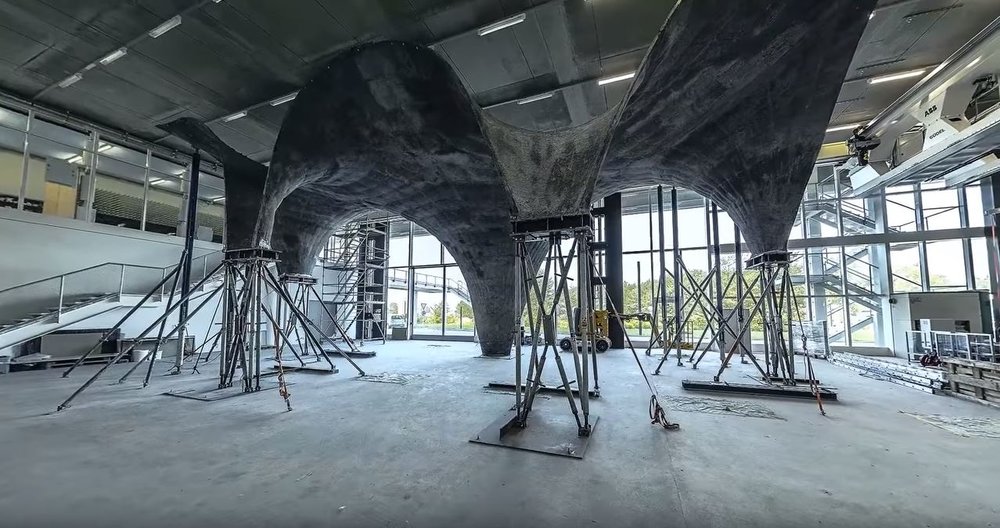
Using layers of scaffolding, edge beams, cable-bet falsework, fabric shuttering, textile reinforcement, and concrete, the structure is able to not only support itself, but do so in an extremely efficient manner. The final prototypical structure was only between 1 1/8” and 4 ¾” (3 to 12 cm) thick and also contains an interior layer of heating and cooling coils, as well as a layer of thin-film photovoltaic cells to produce energy for the structure.
The prototype build took around 6 months from start to finish, according to the team, but when it is installed on a real building next year, they expect it to take between 8 to 10 weeks. The building the roof will be installed on is being referred to as the HiLo Penthouse, which will be a roof-top apartment above the NEST, which is a research and innovation building in Dübendorf, Switzerland which focuses on new building and energy technologies.
The prototype that you’ll see in the video below was a full scale model of the version to be installed later and was around 24 feet tall (7.5m) and will cover an area of about 1300 square feet (120m²).
The steel cables that were used to provide the structure for the formwork and the textile reinforcement are reusable. The design of the steel cable was determined by an algorithm that precisely locates the cables in order to evenly distribute the force of the wet concrete. The concrete had to have just the right moisture content in order to be viscous enough to hold to the formwork but moldable enough to be sprayed using the research team’s proprietary method of spraying the concrete.
This method is similar to another concrete forming method used to construct flowing, domed buildings using concrete that a company called Binishells uses. Their method enlists the help of an air-filled bubble, called a pneumoform, to give the concrete its shape. That inflatable form can also be re-used on other projects.
Check out the video below for some more details of the prototype roof construction:

Concrete is an extremely strong building material, but has a notoriously weak tensile strength. In order to resist tension, bending, and shear forces, steel rebar or other reinforcement materials are added either prior to the placement or into the mix. Even with reinforcement, concrete is still extremely rigid and prone to cracking. In the event of a major earthquake, the uneven and horizontal forces can cause structures to crack and, in the worst case, cause failure.